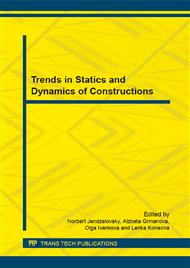p.206
p.212
p.218
p.225
p.229
p.235
p.241
p.245
p.252
3-D CFD Simulation of the Airflow over a Gable Roof with Different Elevations
Abstract:
The pressure coefficients on duo-pitched roofs of separated buildings are well described by several standards. Nowadays, there are various commercial or non-commercial programs which can predict the pressure coefficients. However, the most accurate method is to perform a wind tunnel test. The aim of this paper is to simulate the airflow over a gable roof with different elevations under ANSYS Fluent 14.0 program. Examined elevations of the gable roof are 5°, 15° and 30°. Classical two equation k-ε turbulence models based on Reynolds Averaged Navier-Stokes (RANS) equations simulation were performed. Performance of each turbulence model with the increasing angel of the roof was compared.
Info:
Periodical:
Pages:
229-234
Citation:
Online since:
June 2015
Authors:
Keywords:
Price:
Сopyright:
© 2015 Trans Tech Publications Ltd. All Rights Reserved
Share:
Citation:


